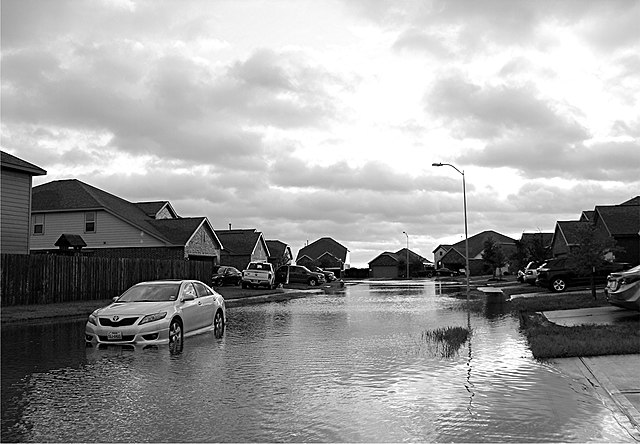In a recent research published August 25 in the journal Nature Communications, scientists combined attribution of extreme weather events (to climate change) and spatial quantitative social research and showed not only that climate change greatly increased flooding caused by Hurricane Harvey in 2017, but that low-income Latino communities were also hit hardest.
According to the
research introduction, their “analysis is based on a census of approximately 1.1 million residential land parcels located within 795 census neighborhoods in Harris County, Texas—the largest county of the Houston metropolitan area that was among the hardest-hit areas by Hurricane Harvey”.
“Gradually, researchers began to use models for two separate climate systems: one with human-induced global warming and one without. By comparing extreme weather events in the two different worlds, scientists can now say how climate change has influenced the likelihood or severity of particular heat waves, droughts, floods and hurricanes. But it was only recently that scientists have also begun to track climate change’s fingerprints on the impacts of given events: quantifying the number of homes flooded by climate change, for example, or billions of dollars in damage done”, according to
The Washington Post.
According to the research, scientists estimated that global warming was responsible for about 20% of the rainfall during Hurricane Harvey; reaching 38%. When these numbers were connected to a flood model, they found that climate change increased the depth of the flood by between 8 and 10 inches (between 20 and 25 centimeters). For somewhere between 32% and 50% of homes, those 20 to 25 centimeters were the difference between having the house flooded or not.
“The first big finding is that climate change can serve as the tipping point between flooding and not flooding. That extra few inches could mean the difference between having a very soaked lawn and having a few inches of water in your home — which could mean thousands of dollars of damages”, said Kevin Smiley, a professor of sociology and Louisiana State University and the lead author of the paper, to The Post.
Different social and ethnic groups were analyzed by the researchers to measure how they were affected by the floods. According to the study, neighborhoods with more Latino residents are the ones with the highest correlation between climate change and floods. For example, Latino families account for only 36% of properties in Houston that did not flood during the hurricane. They also accounted for 48% of properties that flooded due to climate change, and 50% of properties that would have flooded anyway.
In the description of the research, it is stated that “First, parcels in neighborhoods with more Latina/x/o residents had higher climate change-attributed impacts. […] we multiply the number of parcels in three categories (i.e., not flooded, flooded because of climate change, would have flooded even without climate change) with the proportion of different racial groups in each neighborhood to provide a schematic to illustrate the racial disparities in flood depths […]. Second, parcels in neighborhoods with higher incomes had higher climate change-attributed impacts. Third, in neighborhoods with more Latina/x/o residents, the impact of income is reversed. In these neighborhoods, a greater impact was observed in the lower-income neighborhoods. This finding clarifies the previous two: While greater neighborhood incomes are linked to more climate change-induced impacts, the opposite is the case in Latina/x/a neighborhoods”.
The researchers have not attempted to pinpoint the precise causes of the disparity found in these conditions, but environmental justice advocates argue that poor drainage and outdated infrastructure can increase flood damage in low-income neighborhoods.
According to Smiley, that’s a clear demonstration of how climate change is exacerbating existing inequalities. […] Smiley and one of his co-authors, Michael Wehner, a senior scientist at the Lawrence Berkeley National Laboratory in Berkeley, Calif., say that they mostly want the study to inform the public and also to spur places such as Harris County — which encompasses Houston — to address underlying socioeconomic inequalities”, according to The Post.
The scientists said, according to The Post, also similar studies could be used for litigation — one of the original goals of what’s known as attribution science. Now that scientists can trace specific damage to climate change, it may be possible to someday sue fossil fuel companies for helping to spew greenhouse gases into the atmosphere. So far, similar lawsuits haven’t made it far in the U.S. context. But with the United Nations focusing more on the idea of ‘loss and damage’ for climate-related disasters, such research could become increasingly useful”.
 commons.wikimedia.org
commons.wikimedia.org











